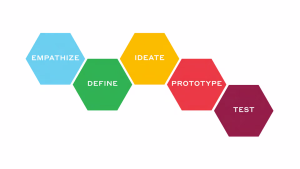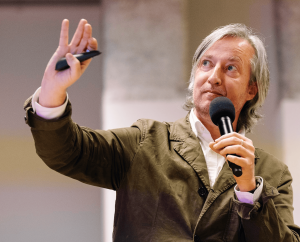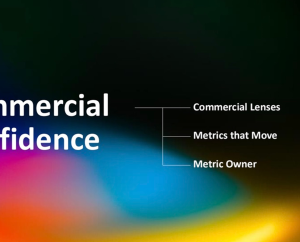When Design Thinking changed how we approach product and service design, it was a different world. What was once seen as an innovative methodology now shows its limitations.
My Integration of Design Thinking.
I often find myself reflecting on my university days, amazed at how little I truly understood back then, while some concepts are finally coming together for me now.
In the early years of my Product Design course, the challenges sometimes felt overwhelming. Each issue required extensive study, detailed drawings, and, honestly, a bit of frustration. But they were ultimately finite problems. If you could balance function, physics, and aesthetics, you could find a way out.
It wasn’t easy—far from it. Imagine a young woman in her early twenties grappling with the calculations needed to design accessible hospital bathrooms. Yes, it was tough, but it was also clearly defined.
Nearly two decades later, my approach to work has shifted tremendously. Nowadays, I find myself sticking post-its on a glass panel or a virtual board, trying to tackle endless questions that arise after a brainstorming session. Since those days, digital products and design thinking have become integral parts of my life.

The Origins and Promise of Design Thinking
Many of us are familiar with Design Thinking. Still, to find a definition, we can use the words of Tim Brown, IDEO’s CEO, who defines it as follows: “a human-centered approach to innovation, that draws from the designer’s toolkit to integrate the needs of people, the possibilities of technology, and the requirements for business success.”
At its core, Design Thinking pulls from a mix of ideas from different fields. It takes a page from Pelle Ehn’s work in participatory design from Scandinavia, which connects designers with users. It also draws on Herbert Simon’s concept of determinate rationality and Alex Osborn’s brainstorming techniques.
The idea of the reflective practitioner, introduced by Donald Schön, emphasizes how “doing and thinking go hand in hand.”
What began as a nuanced approach to design was eventually packaged and simplified for mass consumption. Bruce Nussbaum pointed out, “By packaging creativity within a process format, designers could expand their engagement, impact, and sales inside the corporate world. Companies were comfortable and welcoming to Design Thinking because it was packaged as a process.”

A Conflicting Situation
I’ve always appreciated how Design Thinking offers a framework everyone can use, even if they don’t have a design background. This has democratized design and brought so many different viewpoints to the table.
The vibrant Post-it aesthetic and engaging collaborative workshops felt groundbreaking compared to the isolated design practices of the past.
However, this democratization also had its downsides. We sometimes overlooked the importance of deep expertise as we embraced the “beginner’s mind” celebrated by Design Thinking pioneers—a mindset that encourages openness and freedom from preconceptions.
The notion that we can “empathize hard enough and solve any problem” has created a misleading equivalence between designers’ understandings and users’ real-life experiences.
Sometimes, I’ve found myself in rooms full of enthusiastic Post-its containing ideas that weren’t grounded in practical realities. The five-step hexagon process—Empathize, Define, Ideate, Prototype, Test—began to feel like what graphic designer Natasha Jen called “innovation theater”: a situation where the appearance of innovation is more critical than actual innovation, where the focus is on checking boxes and following a process rather than implementing meaningful change. Ideas generated without proper context rarely survive contact with the real world.

Role Changes
Design Thinking elevated the designer from a creator of tangible products to a systems thinker capable of reinventing entire experiences. This expanded our influence but also diluted our focus. We became facilitators of ideation rather than practitioners of craft.
In my practice, I’ve seen how design sessions can generate excitement and beautiful case studies but often fall short when transitioning to execution. The methodology doesn’t always consider real-world obstacles, like organizational pushback, technical challenges, and limited resources, which are crucial for a design’s success.
Cultural Impact
We often overlook that design is all about choosing—picking some elements while setting others aside. This inherent bias is part of the design process and influences how we perceive and interpret things. During the empathy phase of a user interview, there’s a risk of becoming overly identified with the experiences of one particular user at the expense of others.
As we move through different stages of the design process, particularly during conversations with stakeholders, it’s essential to bring together individuals from diverse backgrounds and experiences while valuing their expertise. Finding this balance can be challenging, especially since many companies struggle with diversity and may have biases about which voices should be heard.
The False Security of Design Thinking
Don’t get me wrong—I still find comfort in the methodology, especially in the research phase. The principles of Design Thinking have a valid basis for exploring products and their users. That said, I don’t think it’s a one-size-fits-all solution for every issue we face, and I believe designers need to reclaim the ideation process and get to the heart of the problems. We must bring our domain expertise, technical know-how, and real-world experience into our work.
Throughout periods of great optimism, there has often been a misplaced sense of security in believing that simply empathizing with users and engaging in dialogue was sufficient to outline the paths for our solutions. However, today’s challenges necessitate a broader perspective beyond understanding the user’s needs. Let’s keep pushing for a more all-around perspective!

Moving Beyond
As we look ahead to the designer’s role, we must move beyond uncritical adherence to a methodology. The world has grown more complex, with interconnected systems, environmental concerns, and social impacts that simple frameworks often can’t handle.
For many years, I’ve come across the slogan “We do magic,” often used to describe projects promising innovative solutions seemingly out of thin air. While I may not possess that magic wand, I can offer some reflections to help you navigate moments of uncertainty.
Use frameworks as starting points, not destinations
A solid methodology serves as a guide, helping to navigate the activities we can organize to define or tackle a problem. However, it’s only the beginning. Life often calls for us to be flexible and rethink our strategies. If one approach isn’t working, it’s a great idea to keep an open mind and explore new tactics, even ones we haven’t tried.
Reclaim expertise
When it comes to design, we should trust experienced professionals, just as we would with a mechanic who repairs our car. While it’s important to empathize with specific user groups, we must maintain a broader perspective. This allows us to fully understand the impact of our decisions.
This means investing time in understanding technologies, materials, and systems—specialized knowledge rather than assuming we can design anything by following a generic process.
Commit to implementation
Transforming strategic research into a functional product is a complex challenge. The transition from theory to practice often loses some pieces, requiring us to adapt our mindset and switch to technical aspects.
To ensure ideas endure real-world constraints, we must move from a consultant role to a partnership approach, collaborating with communities and organizations.
Understand the complexity and cultural context
Design Thinking offered the seductive promise that any problem could be solved through a clean, depoliticized process. Cultural dimensions profoundly shape how design thinking is practiced and understood across regions.
It’s often challenging to achieve the level of diversity we desire in work teams, particularly with individuals who can provide a different perspective from the dominant narrative.
Practice critical thinking and acknowledge inherent bias
Exercising critical thinking is about asking ourselves questions, taking a moment to reflect on our actions, and exploring new perspectives.
Do our ideas indeed hold up when the product is used unexpectedly? People are incredibly inventive and full of imagination!

Without Knowledge, There is no Design
On my journey from a student to a professional navigating complex systems, I’ve seen Design Thinking as just one chapter in the evolving story of design—neither the beginning nor the end.
The most outstanding value of Design Thinking was never in its hexagons or Post-its but in how it opened conversations about design’s potential to address meaningful problems.
With knowledge comes the responsibility to use it wisely, moving beyond dogmatic approaches to create a design that serves a complex, culturally diverse world.
***
See Silvia Testa in action on the Design Matters 25 stage in Copenhagen this June! If you can’t wait until June then check out Silvia on her various platforms:
Website: https://monochromerice.design/
Dribbble: https://silviatesta.dribbble.com/
LinkedIn: https://www.linkedin.com/in/silviatesta79/
Instagram: https://www.instagram.com/monochromerice/
Bibliography
Prominent Design Thinker Moves On | On Libraries…From StevenB. https://sites.temple.edu/stevenb/2011/06/02/prominent-design-thinker-moves-on/
The Divisiveness of Design Thinking From Jon Kolko https://www.jonkolko.com/writing/the-divisiveness-of-design-thinking










